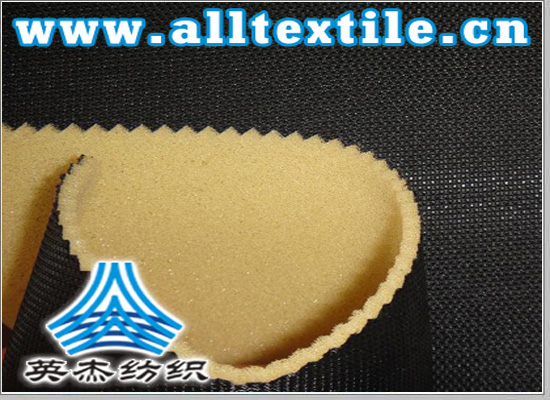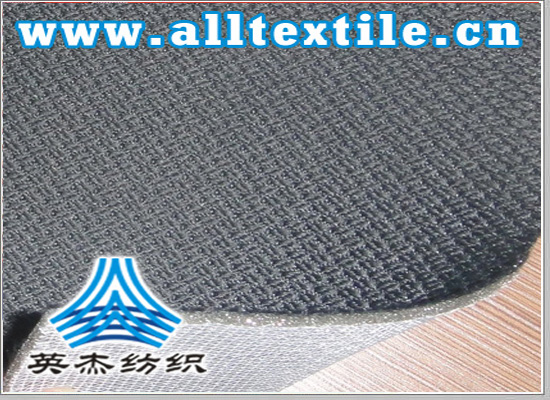The uses of fiberglass in various industries!
The main components of glass fiber:
Its main components are silica, alumina, calcium oxide, boron oxide, magnesium oxide, sodium oxide, etc. According to the alkali content in the glass, it can be divided into alkali-free glass fiber (sodium oxide 0%~2%, which belongs to aluminum Borosilicate glass), medium-alkali glass fiber (sodium oxide 8% to 12%, soda-lime silicate glass containing or not containing boron) and high-alkali glass fiber (sodium oxide above 13%, soda-lime silicate glass) silicate glass).

main feature:
Melting point glass is a kind of amorphous glass with no fixed melting point. It is generally believed that its softening point is 500~750°C, boiling point is 1000°C, and density is 2.4~2.76g/cm3. When glass fiber is used as a reinforcing material for reinforced plastics, the maximum It is characterized by high tensile strength. The tensile strength is 6.3~6.9 g/d in the standard state and 5.4~5.8 g/d in the wet state. Density 2.54g/cm3. It has good heat resistance and has no effect on the strength when the temperature reaches 300℃. It has excellent electrical insulation properties and is an advanced electrical insulation material. It is also used in thermal insulation materials and fireproof shielding materials. Generally only corroded by concentrated alkali, hydrofluoric acid and concentrated phosphoric acid.
Raw materials and their applications: Glass fiber has higher temperature resistance than organic fiber, is non-flammable, corrosion-resistant, has good heat and sound insulation, high tensile strength and good electrical insulation. But it is brittle and has poor wear resistance. Used to make reinforced plastics (see color picture) or reinforced rubber. As a reinforcing material, glass fiber has the following characteristics. These characteristics make the use of glass fiber much more extensive than other types of fibers, and its development speed is also far ahead. Its characteristics are listed below:
(1) High tensile strength and small elongation (3%).
(2) High elastic coefficient and good rigidity.
(3) The elongation within the elastic limit is large and the tensile strength is high, so it absorbs large impact energy.
(4) It is an inorganic fiber, non-flammable and has good chemical resistance.
(5) Low water absorption.
(6) Excellent dimensional stability and heat resistance.
(7) It has good processability and can be made into products of different shapes such as strands, bundles, felts, and woven fabrics.
(8) Transparent and can transmit light.
(9) Good adhesion to resin.
(10) Cheap price.
(11) It is not easy to burn and can be melted into glass-like beads at high temperatures.

The main purpose:
Fiberglass products are widely used in various fields of the national economy, among which electronics, transportation and construction are the three most important application fields. They also represent the development trend of the world’s fiberglass industry in the next few years.
Twistless roving
Twistless roving is made of parallel raw filaments or parallel monofilaments. Twisted roving can be divided into: alkali-free glass roving and medium-alkali glass roving according to glass composition. The diameter of glass fibers used in the production of glass rovings ranges from 12 to 23 μm. The number of twistless roving ranges from No. 150 to No. 9600 (tex). Twistless roving can be directly used in some composite material forming methods, such as winding and pultrusion processes. Because of its uniform tension, it can also be woven into twistless roving fabrics. In some applications, the twistless roving will be further chopped. .
(1) Twistless roving for injection. Twistless roving suitable for FRP injection molding must have the following properties: ① good cutting performance, generating less static electricity during continuous high-speed cutting; ② twistless roving to be dispersed into raw filaments after cutting The efficiency must be high, that is, the beam splitting rate is high, usually above 90%; ③ The chopped raw filaments have excellent mold covering properties and can be covered in all corners of the mold; ④ The resin penetrates quickly and is easy to be rolled flat by the roller. It is easy to drive away bubbles; ⑤The raw silk tube has good retracting performance and the density of the roving is uniform, which is suitable for various spray guns and fiber delivery systems. Twisted rovings for jetting are made of multiple strands of raw silk, each of which contains 200 glass fiber monofilaments.
(2) Twistless roving for SMC SMC is sheet molding compound, which is mainly used for pressing automobile parts, bathtubs, water tank panels, purification tanks, various seats, etc. When manufacturing SMC sheets, the twistless roving must be cut into a length of lin (25mm) and dispersed in the resin paste. Therefore, the requirements for the twistless roving for SMC are good choppedness, less lint, and excellent antistatic properties. , the chopped strands will not stick to the knife roller during cutting. For colored SMC, the roving is resin-saturated in a resin paste with a high pigment content. Usually SMC roving is generally 2400tex, and in a few cases 4800tex is also used.
(3) Twistless roving for winding The winding method is used to manufacture fiberglass reinforced plastic pipes, storage tanks, etc. of various diameters. The number of twistless rovings used for winding ranges from 1200 to 9600. Large pipes and storage tanks tend to be wound with direct twistless roving, such as 4800tex direct twistless roving. The requirements for twistless roving for winding are as follows: ① good ribbon forming properties, in the shape of a flat ribbon; ② good untwisting properties of the twistless roving, which does not detangle when unwinding from the yarn tube, and does not form “bird’s nest”-like tangled yarn; ③The tension is uniform and there is no drape; ④The linear density is uniform, generally less than ±7%; ⑤The untwisted roving has good permeability and is easily wetted and soaked by the resin when passing through the resin tank.
(4) Twistless rough material for pultrusion�� Pultrusion is used to manufacture various profiles with consistent cross-sections, which are characterized by high glass fiber content and high unidirectional strength. The twistless roving used for pultrusion can be a combination of multiple raw yarns or a direct twistless roving, and its linear density ranges from No. 1100 to No. 4400. Various performance requirements are generally the same as those for winding twistless roving.
(5) Twistless roving for weaving An important use of twistless roving is to weave gingham cloth or unidirectional twistless roving fabrics of various thicknesses, which are mostly used in the hand lay-up FRP forming process. The following requirements are required for twistless roving for forced weaving: ① good wear resistance; ② good tape-forming properties; ③ twistless roving for weaving needs to be forced drying before weaving; ④ the twistless roving has uniform tension and the drape should be Comply with certain standards; ⑤ The twistless roving has good decomposition properties; ⑥ The twistless roving has good permeability.
(6) Twistless roving for preforms. In the preform process, the twistless rovings are chopped and sprayed on a mesh of a predetermined shape. At the same time, a small amount of resin is sprayed to fix the fiber mesh into shape, and then the formed fiber mesh is moved in. In the metal mold, the resin is injected and hot pressed to form the finished product. The performance requirements for twistless rovings for this process are essentially the same as those for jetted twistless rovings.

fiberglass fabric
Introduced below are various fiberglass fabrics woven with fiberglass yarns.
(1) Glass cloth The glass cloth produced in my country is divided into two categories: alkali-free and medium-alkali. Most of them abroad are alkali-free glass cloth. Glass cloth is mainly used to produce various electrical insulation laminates, printed circuit boards, various vehicle bodies, storage tanks, boats, molds, etc. Medium-alkali glass cloth is mainly used in the production of plastic-coated packaging cloth and in corrosion-resistant applications. The characteristics of the fabric are determined by fiber properties, warp and weft density, yarn structure and weave pattern. The warp and weft density is determined by the yarn structure and weave pattern. The warp and weft density plus the yarn structure determine the physical properties of the fabric, such as weight, thickness and breaking strength. There are five basic weaves: plain, twill, satin, rib and mat.
(2) Glass ribbon Glass ribbon is divided into woven edge tape and non-woven edge tape (raw edge tape). The main weaving method is plain weave. Glass ribbons are often used to manufacture electrical equipment components with high strength and good dielectric properties.
(3) Unidirectional fabric Unidirectional fabric is a four-warp torn satin or long-axis satin fabric woven with thick warp yarns and fine weft yarns. It is characterized by high strength in the main direction of the warp.
(4) Three-dimensional fabrics Compared with flat fabrics, three-dimensional fabrics have structural characteristics that have developed from one-dimensional and two-dimensional to three-dimensional, so that composite materials using them as reinforcements have good integrity and conformability, which greatly improves the performance of composite materials. Interlaminar shear strength and damage tolerance of materials. It was developed with the special needs of aerospace, aviation, weapons, shipbuilding and other sectors. Today its application has been extended to automobiles, sports equipment, medical equipment and other sectors. There are five main categories: woven three-dimensional fabrics, knitted three-dimensional fabrics, orthogonal and non-orthogonal non-woven three-dimensional fabrics, three-dimensional woven fabrics and other forms of three-dimensional fabrics. The shapes of three-dimensional fabrics include block, column, tube, hollow truncated cone, and variable-thickness special-shaped sections.
(5) Special-shaped fabric The shape of special-shaped fabric is very similar to the shape of the product it is to strengthen, and it must be woven on a special loom. Symmetrically shaped special-shaped fabrics include: round covers, cones, caps, dumbbell-shaped fabrics, etc. They can also be made into asymmetric shapes such as boxes and ship hulls.
(6) Grooved core fabric Grooved core fabric is a fabric composed of two parallel layers of fabric connected by longitudinal vertical strips. Its cross-sectional shape can be triangular or rectangular.
(7) Glass fiber stitched fabric is also called knitted mat or woven mat. It is different from ordinary fabrics and mats in the usual sense. The most typical stitch-bonded fabric is a layer of warp yarns overlapped with a layer of weft yarns. The warp yarns and weft yarns are woven together to form a fabric through stitching. The advantages of stitch-bonded fabrics are as follows: ① It can increase the ultimate tensile strength, delamination resistance and flexural strength of FRP laminated products; ② Reduce the weight of FRP products; ③ The flat surface makes the FRP surface smooth; ④ Simplification Hand lay-up operation to improve labor productivity. This reinforcing material can replace continuous strand mats in pultruded FRP and RTM, and can also replace checkered cloth in centrifugal FRP pipe production.
(8) Fiberglass insulating sleeve is made of fiberglass yarn woven into a tube. And coated with various insulation grade casings made of resin materials. There are PVC resin fiberglass paint tubes. Acrylic fiberglass paint tube, silicone fiberglass paint tube, etc.






